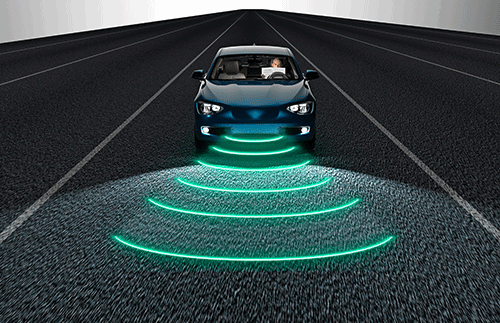 Read the peer reviews for this article
Read the peer reviews for this article
History teaches us that technology can have a profound impact on our society. What’s more, it has the temerity to set its own pace as it does so.
Just 15 years after the Stockton and Darlington Railway opened for business, railway mania was generating hundreds of miles of rail routes across the country. Twenty-five years ago few of us had an email address, yet today ecommerce is a cornerstone of the economy. And that smart phone you can’t put down? Science fiction a decade ago.
Our lives are redrawn with tacit permission to innovation’s whim. Railways have not, should not and will not escape the march of progress. And neither will other parts of the public and private transport picture.
This summer, the Department of Transportation in the United States unveiled what it called the “first federal policy on automated vehicles”, with the aim “to create a path to fully autonomous technology”. To put it another way, self-driving cars.
Not to be outdone, our own Department for Transport has allied with the Department for Business, Energy and Industrial Strategy to set up the Centre for Connected and Autonomous Vehicles. Over the summer, they ran a consultation entitled Pathway to Driverless Cars. Its opening paragraph bets big:
“Over the next few years advances in connected and automated vehicle technologies will have a profound impact on our transport system, with the potential to deliver major benefits: fewer crashes on our roads; freedom to travel for those who currently find that difficult; more efficient transport networks that are safer, smoother, and swifter; and, new high-value jobs in the technology and automotive sectors.”
Of course, technology forecasts have been infamously wrong before. My children are not yet raised on Mars, and my home is still built out of bricks, rather than being some geodesic grass-roofed Hobbit hole. However, cars that can whisk you to work while you either type on a tablet or doze behind the wheel would appear to be the flavour of the month when it comes to ‘the next big thing in transport’. And not just among policy makers.
Also weighing in this summer, the Boston Consulting Group (BCG) published an article entitled Will Autonomous Vehicles Derail Trains?
The BCG assumes a future where autonomous vehicles (AVs) become fully operational and commercially available in the next two decades. Its research suggests “the number of travellers who will opt for AVs in the future could be considerably larger than expected”, and that “over time, at least 40% of current train passengers will come to prefer taking an AV over the train”.
Thomas Steffens, the principal of BCG’s Amsterdam office, is one of the authors: “I work full-time in the transport and logistics sector. We see driverless vehicles disrupting the taxi space, trucking and road transport space. Almost all of the sectors within transport and logistics are being disrupted by digital.”
Is rail a safe haven in a world of disruption?
“When we looked 20 years ahead we could imagine driverless vehicles or autonomous technology changing the comparative economics between road vehicles and rail-bound transport in a fundamental way, and thereby putting the current business in rail at risk.”
BCG theorises along a number of lines. One of them is increased productivity - the argument that you can now work behind the wheel, filling the travel time just as you would on a train, makes an AV attractive to would be users. Secondly, people who can’t physically drive for medical reasons, or those who simply don’t have a licence and therefore choose the train, may also be attracted to make a switch.
However, BCG goes much further with its thinking. It explores a future where the advantages of a car that can arrive at your door when you request it, and can then drop you at your precise destination, will encourage both ride sharing and car sharing. Using data gathered in the Netherlands, it predicts that once that starts happening, travel costs (in terms of price per passenger per kilometre), will fall not only well below a conventional car but also just below train travel (see graph, overleaf). And the saving becomes more significant for people travelling outside peak times and in rural areas.
“What needs to happen is a flawless AV technology,” says Steffens, discussing how the technology might find its way into the market and be adopted by consumers.
“There are two levels. Full functionality on the highway versus full functionality door to door, in residential areas. The first is not that difficult and will happen in the next five to seven years (nobody is sure exactly), and it will affect the rail business a bit. If vehicles become autonomous on the highway, people who might take the train will say: ‘I will take the car because I can work on the highway and save time.’ This is limited to less than 10% of train journeys.
“However, once autonomous technology works door to door things change. Quite a lot of train travellers might prefer the driverless proposition over the public transport alternative. The technology needs to handle all the issues - dogs, playing children, cycles and so on. Maybe that will be eight years or 20 years - nobody knows.”
But if this is ordering a wake-up call, it’s far from certain when to set the alarm for.
“A wake-up call suggests that they are sleeping, but I can’t judge that. But the sector should be aware that the economics of rail-bound transport versus road-bound transport will fundamentally change in the next ten years. Many of the travellers you currently have will not be there forever. They are now with you because they prefer your proposition. But the road-bound propositions will dramatically improve over the next decades. We suggest the rail industry should act.”
On October 11 2016 the UK witnessed a first, as a driverless vehicle nosed its way among the public in Milton Keynes. It was confined to a one-kilometre circuit of pavements around the railway station. A two-seater, people took it in turns to sit beside a safety driver, who was there to take over if required. The aspiration is to provide 40 of the pods for a public service next year.
The BBC News website reported: “The trial in Milton Keynes is the culmination of 18 months planning, which required a virtual mapping of the town along with extensive work with Milton Keynes Council to ensure the vehicles would be safe, conform to regulations, and be accepted by the public.”
Less than a month later Iain Forbes, head of the aforementioned Centre for Connected and Autonomous Vehicles, gave evidence to the House of Lords Science and Technology Committee (another branch of the Government investigating AVs). He told them: “Initially it looks like that technology will be deployed in constrained environments, and views about when that might hit the market in a serious way really do differ. Some people say the 2020s, some people are saying the 2050s… making sure we have a strategy which is robust enough for a range of different scenarios is one of the things that’s really important.”
There has been a lot of confident talk about how quickly one day we will run, given our tentative baby steps so far. One potential next step, says Steffens, is ‘platooning’, where several vehicles come together on the motorway to form a ‘road train’.
“It is an intermediate step towards full autonomy. It helps in the highway transport in the next decade. But if the technology stops at platooning, there will not be a big disruption . It is very useful, but in the end the technology should work without platooning - so completely autonomous door to door by one vehicle. If driverless technology were not to move beyond platooning, I don’t see a big risk for the rail sector.”
But others doubt we’ll even get that far. “AVs have been massively oversold,” believes Campaign for Better Transport Chief Executive Stephen Joseph. “There are all sorts of reasons why there are problems with them. People are just starting to wake up to these.
“There are ethical issues here. Suppose someone runs out in front of your car… a child or a dog. How are the algorithms set? Does the car run over the dog or the child? Does it swerve across the carriageway and hit an oncoming vehicle? Does it protect the occupant at all costs? There are big questions. We’re so far away from this that I would be surprised if it was a real threat immediately.”
But could it form part of a genuine public transport picture?
“I don’t think the way it is being talked about at the moment is public transport. If you listen to advocates and ministers who have been sold on this, it is terribly seductive. What it is, is exactly the current journeys people are making but without them having to drive. Even if they are shared, they are part of a public transport network in which fixed-route rail looks like part of the story.
“As ever with these things, the issues are social and political rather than technological. If you were prepared to share vehicles or have them running around the place, you can do that. But the question is: how does that play out in terms of connections?
“For Milton Keynes it might be the right answer for getting people to the railway station. But I do emphasise people will still want to go to the railway station because it will the easiest way of getting to and from other places. You could argue the threat is to buses rather than rail.”
Why?
“Well, if you have shared AVs, that looks like a bus anyway. Let’s suppose where we end up is that AVs are part of the door to door journey where rail is still there. The market that gets disrupted is buses.”
The march of digital technology has already changed the railway industry. The Docklands Light Railway immediately comes to mind when considering ‘driverless systems’. However, decades before that the Victoria Line pioneered ‘automatic train operation’, albeit with a driver in the cab.
The former has been successfully reconfigured to a moving block signalling system and the latter has been upgraded, which together with faster trains has created more capacity. In the years ahead, just as autonomous technology will potentially change the road sector, it is unthinkable that there won’t be further developments for railways to seize upon.
“Say you don’t have to get the trains out of the depot,” says Joseph. “The trains come out of the depot to the nearest platform, where the drivers pick them up. In some ways the technology might enable the railways to do better. If you can make AVs, road vehicles are far more dangerous than rail vehicles at the moment. You could have safe rail vehicles that are autonomous. You can still have staff, but they are for security and other purposes. The technology helps rail, assuming you can adopt it, as much as it hurts it.”
How it might be adopted on the roads is already exercising legal minds. One of the big firms to respond to the Government’s Pathway to Driverless Cars consultation was Irwin Mitchell.
Neil Whiteley is a partner and head of the firm’s Cambridge office. He’s a leading authority on head, brain and spinal injury claims: “A lot of people seem to be running ahead of themselves at the moment. There’s a lot of excitement that we are at the dawn of a new age. I think actually, particularly in Britain because of our roads - we have densely populated areas and densely used roads - there would have to be quite a lot of work to the infrastructure to support full autonomy. If you think about the investment available in infrastructure, that has to have a question mark around it.”
The adjustment of motoring regulations will naturally also affect insurance claims and the question of fault in an accident.
Says Whiteley: “What the consultation sought to do was to create the environment where insurance products could start to be developed - where if it turned out a car was in some form of autonomous mode, and it is the automation that fails or there is a safety failure that could be a component in an accident, then the insurance cover in place on the vehicle would pay out regardless of whether there was an issue between the insurer and the creator of the technology/software. The question of ‘does the manufacturer pay?’ or ‘does the insurer have to pay?’ would be left for another day. The victim of the accident doesn’t worry about that.
“So at the moment it is very much edging forwards, and the Association of Personal Injury Lawyers (which is our professional body) has put in a paper that says road users - including pedestrians and cyclists - shouldn’t get caught up in some complicated dispute between a driver’s insurer or a motor manufacturer (or indeed a software manufacturer), because they could be different about who caused the accident.”
Car technology has continued to develop since Henry Ford offered us one choice of colour. Today, we might scoff at the days when heaters and radios were offered as an exciting development. The future will likely look back in the same way at our cars, with automatic headlights and systems to keep you in the same lane on a motorway. Even in modest vehicles, drivers are beginning to enjoy some element where the car thinks for itself. But the forthcoming mix of vehicles on the road brings trouble, Whiteley forecasts.
“When autonomy really takes off we should be in a better place, because the idea is it takes drivers away from decision-making, and drivers make a lot of errors. The popular figure quoted at the moment is that 90% of road collisions ultimately come down to driver error, so you would have thought that if everyone was in autonomous vehicles and the technology supported it, we’d be in a much better place.
“Actually it won’t happen like that. There will be a long lead-in period where you have a mix of autonomous vehicles, semi-autonomous vehicles and (let’s face it) old vehicles which are not in any way embedded with that technology. That overlap period is going to have huge potential for complication.”
However, Whiteley’s biggest concerns are reserved for platooning: “That’s great in Canada or Australia, where you have long stretches of barely used roads or certainly fairly free-flowing highways where you could platoon a number of vehicles together without causing a major issue. In our response to the consultation we certainly expressed reservations about how that works in Britain.
“In Britain, roads are massively over-subscribed. For example, if you have a large convoy of lorries separated only by a couple of metres, which is the way it’s supposed to work, it doesn’t give people room to escape or manoeuvre if there is an incident in another lane. It could cause difficulties for people leaving or joining motorways if there is a blockage and people start accelerating to get around that. It is a complicated and challenging arrangement on the UK’s roads.”
In its second evidence session, the House of Lords Science and Technology Committee asked questions about the societal impact of AVs and how both drivers and third parties might react to sharing roads with them.
Professor Nick Reed, technical lead on the Greenwich Automated Transport Environment, argued that examining the human response was at the heart of current trials.
“It gives us the opportunity to engage directly with people, give them an experience of automated vehicles, and then come to a conclusion about whether they would like to use/pay for transport using such vehicles.
“There are a number of frankly unhelpful surveys that have come out and asked members of the public if ‘they think they would like a driverless car’ when it’s very difficult to make a judgement on that when you haven’t experienced one. In our early demonstrations we’ve all seen there is a lot of interest, a lot of excitement, and ready acceptance of automated vehicles. So let’s get out there, do the trials and find out the genuine opinions people have.”
Assuming the Boston Consulting Group’s view of the impact of AVs is correct, what then should the rail industry be doing to prepare itself to compete in a changing transport landscape? Steffens has a four-point manifesto.
“Step one would be to also seize the advantages of autonomous technology… it would be a strange situation if there were autonomous cars and not an autonomous train. It seems more difficult for an autonomous car to navigate through a city than it is for an autonomous train.
“Step two would be to accelerate the improvement of their proposition. Many rail companies in the world are trying to improve quality, trying to reduce costs, trying to improve reliability. We think they need to fast forward those efforts - that is their only chance to close the gap between where the car will be in ten years from now and where rail can be. Many rail companies need to up their game in their efforts to be cheaper, faster, more reliable and more customer-friendly.
“Step three - they need to assess their investment pipeline. Typically rail companies have pipelines for buying new rolling stock or replacing infrastructure or building new. Several of those will still be very much needed 20 or 30 years from now, but others will be less needed compared with today. Companies need to stress test their investment in case the driverless car becomes a big success.
“Step four - they can also try to become successful in managing their own fleet of driverless vehicles, because it is another type of public transport. Try to build a proposition themselves in driverless mobility.”
Ironically Steffens’ last point brings the past to mind. Railway companies once owned fleets of small vehicles - goods that had arrived by train at a main line terminal could be delivered through city streets by the likes of the Scammell Scarab. Could something similar be reintroduced one day, but this time without a driver and purely for the purpose of picking up and dropping off passengers ‘at the door’?
Whatever the developments in other transport modes, the rail industry at least heads towards the future having enjoyed a huge growth in passenger numbers. On the horizon, HS2 promises faster inter-city journeys and to release capacity on other routes, while new trains will continue to improve and develop the passenger experience.
Perhaps right now, the promised rise of AVs should be viewed first and foremost as a reminder not to rest complacently. But will they ever deliver on their promise?
As Stephen Joseph concludes: “We are some way off yet. We’ve had flying cars since Tomorrow’s World in the 1960s - and they are still not here!”

The rail industry is not the only sector where some forecasters are predicting problems with the rise of Connected & Autonomous Vehicles (CAVs). If you listen to some, there will be no need for motor insurance in the future! Fortunately. these forecasts are just that - a view of what some individuals think might happen. There are other views I think both our industries would prefer.
A KPMG report commissioned by the Society of Motor Manufacturers and Traders predicted that by 2030 a commitment by the UK Government to autonomous driving could drive vehicle production up to 2.4 million per year (from 1.6 million), with the overall positive effect to the economy being £51 billion. Drifting further to the even less predictable future, by 2040 this amount “could be as high as £121bn”. Unsurprisingly the sight of these sorts of numbers piqued Government interest and a commitment was made to make the UK a world leader in developing CAVs.
As part of Government funding being made available, AXA joined consortia looking to promote this vision, alongside interested parties including consultants, Robotics Labs, First Bus Company in Bristol and the Williams F1 Team. More rounds of investment followed and AXA is now part of three separate consortia (Venturer, UK Autodrive and Flourish).
I mention this detail, as hopefully it gives credibility to the comments that follow. These are views garnered from working with people who are testing and implementing the latest technology, and preparing products (both physical and financial) for this future world. Hopefully readers will be pleased to hear that our discussions have focused on CAVs not replacing all buses, trains and other modes of transport, but instead contributing to a much improved transport infrastructure where each individual element communicates with the others and forms a seamless, customer-friendly solution.
While some people feel that CAVs will reduce congestion on roads, others suggest that the flexibility and efficiency will drive up vehicle numbers, counteracting much of the perceived good. Different models of ownership will come in to play - we talk a lot about the ‘Sharing Society’, and the idea of my own car popping off on other journeys rather than sitting aimlessly in a rail car park all day, and then just ensuring it’s back when needed, does have both a moral and economic appeal. I also fundamentally believe that style of operation will improve the appeal of the train-based part of the journey as well.
People worry about the autonomous aspect, but maybe don’t think enough about the benefit of being ‘connected’. As well as driving itself, receiving information from traffic lights, other road users, the rail network and so on all contribute to a much better customer outcome than we currently experience.
Driverless cars are coming, sooner than many people think, but we shouldn’t fear them or feel threatened. Instead, I would recommend any industry predicted to be affected gets on board with the many initiatives, and helps contribute to a world with safer roads, less accidents, and with different but still thriving business models.

We all make our transport decisions based on a mixture of convenience, choice and cost. So new transport choices, such as autonomous vehicles are likely to present both an opportunity and a threat to the railways: an opportunity as these vehicles could present a very real choice for the ‘last mile’ problem (how do you get to and from the railway station?); a threat as they will offer a very real choice for lots of journeys where people currently use rail and bus.
For a group of people travelling together, Uber offers a very real choice, and I suspect it is already nibbling away at the margins of rail services. It is certainly having an impact on bus services. Imagine if that service becomes much cheaper – no driver! Then autonomous vehicles will really become a compelling option for journeys around the margins of major conurbations.
Rail will probably continue to dominate in some markets. Mass commuting to city centres will always need more capacity than any road-based transport can offer (apart from bus rapid transit). High-speed, long-distance travel might always need specialised vehicles. However, even here there could be new developments. Many trains sit idle for most of the day. Great if they could come off the network and do something else while waiting for the peak again - a real rubber-wheeled tram-train in action!
Autonomy is clearly an intended direction of some sectors of the roads industry, and there are clear signs of progress. Public transport (rail, bus or tram) is likely to be affected, and it will have to seriously up its game as some users opt for automated vehicles. A shift from rail to road will have potential negative consequences for users of motorways and major ‘A’ roads. Increased demand for road space, regardless of whether the driver is human or autonomous, could cause major issues for journey reliability and user satisfaction.
That said, current autonomous technology is adding exciting developments to the whole transport industry. It is no longer
confined to an episode of Tomorrow’s World to have vehicles equipped with the ability to correct lane drifting, identify something appearing in a driver’s blind spot, or apply the brakes in an emergency. These are all good features in the quest to make roads safer. Public transport is also embracing its fair share of useful autonomy, with accurate, real-time information becoming the standard need for passengers and smart ticketing adding to consumer expectation.
Technology should cater for what users want, and the whole transport industry needs a balanced approach to future developments. Autonomous vehicles should not be developed in isolation without taking into account the wider consumer and transport sector considerations. An all-encompassing transport strategy is required to ensure that future transport can be accurately predicted and provided for.
So, to the question of full autonomous vehicles, the elusive self-driving car. I have no doubt that current and future technology will be able to deliver the solutions to enable cars to allow a fully autonomous journey between two locations. The question should not be based on whether we can develop this technology, but whether we should develop it based on current infrastructure limitations, consumer requirements and our wider social need to balance demand for the whole transport sector. Or will the market simply fill the space?

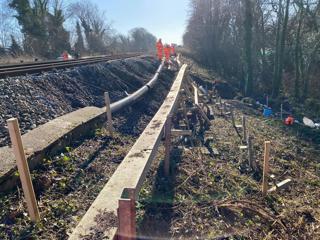

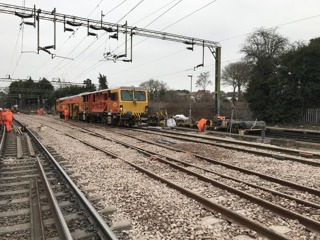
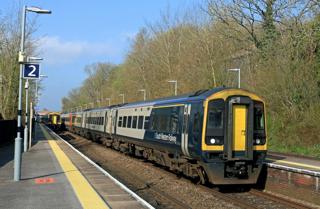
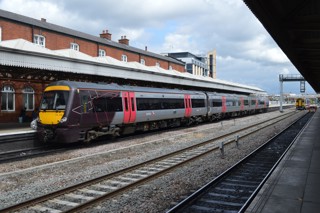











Login to comment
Comments
No comments have been made yet.